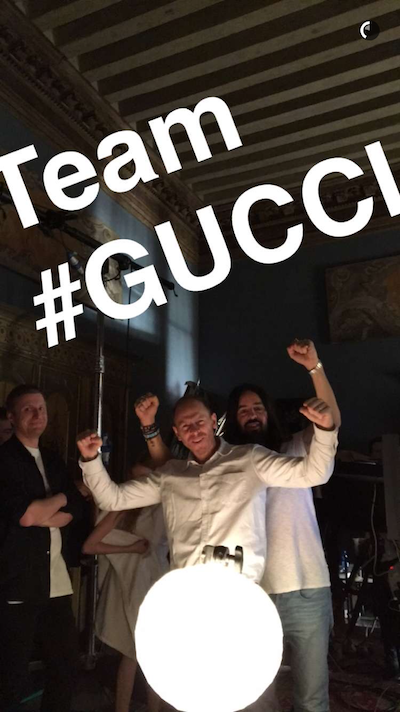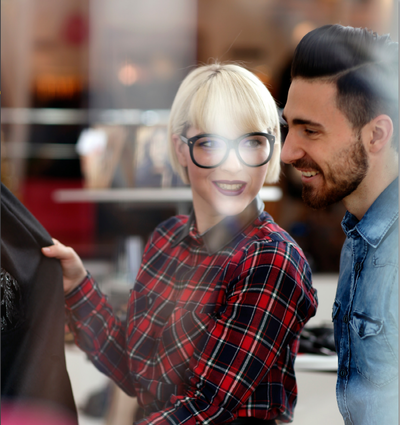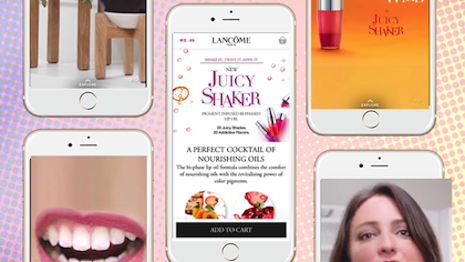Millennials and women prefer independent labels to designer and luxury brands, according to a study by creative management platform Flite.
Twenty-three percent of women and millennials are likely to buy independent labels, compared to the 14 and 19 percent, respectively, which are apt to purchase luxury brands. Luxury brands are thus tasked with ensuring these consumers switch their preferences as income begins to increase.
“Millennials not only want affordable, fashion-forward clothing, but they want it in a convenient manner,” said Jason Wolfson, associate director of marketing at Flite. A rise in online shopping sites, such as Asos, Stitch Fix and others that feature indie labels, offer the millennial audience the latest trends, affordability and convenience.
“The difference is that these consumers are not loyal to a particular brand, but rather a clothing provider that provides them those three selling points,” he said. “While their price threshold may rise as their income does, this trend in fashion shopping will likely not for millennials. All of this results in the need for traditional luxury brands to shift towards a data-driven digital ad experience.”
New content
For comparison, Gen Xers prefer luxury brands to independent labels 22 percent to 19 percent, while men prefer luxury 28 percent to 19 percent. Consumers, including high-income earners, rank price as a key purchase-driver ahead of any other, meaning brands most focus on a value proposition.
Following price, named by 61 percent of consumers, appearance followed with 38 percent and brand name ranked third, mattering to a third of consumers. As the brand name matters less and price matters more even for the affluent, brands must appeal to consumers on value rather than name.
Social ads are the most influential channel when it comes to influencing fashion choices. Flite found that they influence 61 percent of consumers.
Facebook remains the most effective social channel in this regard, with Pinterest, Instagram and YouTube following. Snapchat, a relatively new player, has lower volume, but its growth potential suggests brands should not bypass it.
Additionally, Snapchat is popular with precisely the audience that luxury brands are losing out on. Its largest age demographic is 18-24, with under-18 and 25-34 following, and it skews similarly toward women.

Gucci snap from Jared Leto takeover
Perhaps in reaction to the success of an Instagram presence, luxury brands are embracing Snapchat early, hoping to create desire in and build loyalty among the audience that opts for independent labels.
During New York Fashion Week, retailers embraced Snapchat as the latest and greatest social media platform.
A number of retailers have noticed the change in relationship consumers have with fashion week and have responded accordingly, becoming active on Snapchat just prior to New York’s 2016 edition. Almost half of the platform’s audience is between the ages of 18-24, rates at least double those on Instagram and Twitter, making it an ideal platform for reaching a consumptive audience (see story).
Flite found that shoppable ads, still relatively uncommon, have engagement rates of 30 percent. Sixty percent of those surveyed recall seeing one, and 70 percent of that subset used it to complete a purchase.
“Learn more” ads attract nearly the same engagement, at 28 percent. After that, there is a drop off to third-place content-driven ads and sponsored articles, which engage at a 15 percent rate.
The study also indicated that consumers respond to personalization, especially in the form of curated product recommendations. Everything from email lists to site presentation can be personalized to each individual consumer, with such small gestures possibly leading to prolonged brand loyalty.
Lastly, Flite found that user-generated content featuring real people is the most preferred form of video content, significantly outperforming how-to tutorials and fashion shows.
“These insights are aligned with the overall digital landscape,” Mr. Wolfson said. “Digital savvy millennials want trendy styles, but with both convenience and affordability, whereas older shoppers tend to be more loyal and traditional with recognizable luxury brand names.
“The more engaging ad formats, i.e. shoppables, are equally beneficial to advertiser and consumer,” he said. “Overall, consumers want their digital fashion experience curated for them. From product recommendations, pricing, to ad content, the creative needs to be personalized in a 1:1 manner.”
Getting younger
Flite’s findings illuminate content strategies to focus on to attract the consumer that no longer responds to a more traditional marketing mix. Additionally, research suggests that value- rather than brand-focused shopping is not something that will go away, but is instead a reality of the future.
The attitudes and behavior of millennials that befuddle brands are only more apparent in Generation Z, a study by experiential retail marketing firm Interactions reveals.
Gen Z consumers’ budgets are weighted toward the experiential rather than the material, and they are constantly connected to technology. Similar tendencies in today’s consumers are challenging brands to reorganize marketing strategy and retail experience, and the data shows this is the new normal, not a passing fancy (see story).
Besides finding new ways to market to adapt to new behavior, the luxury retail world must also consider broader industrial changes that drive consumers elsewhere. Most notably, the wait-time between a runway show and commercial availability leads consumers to find replacement products with other retailers.
Technological innovations including ecommerce and social media have created a domino effect of consumerism, creating fertile ground for the see-now, buy-now movement.
A new report from Fashionbi, “See-Now, Buy-Now: How Is The Industry Adapting To Fashion’s Newest Movement?” lays out the various solutions that designers and luxury labels have settled on to appeal to consumers who have become tired of waiting five months between seeing an item walk down a runway and being able to buy it. The industry agrees on the potential benefits of a realigned timeline, but apparel labels are divided in their approaches to the problem, which may lead to a fragmented fashion calendar (see story).
“Luxury brands should leverage data and adtech more to build a captivating personalized user experience,” Mr. Wolfson said. “Whether campaigns are brand or performance focused, brand advertisers can provide loyal and new consumers with intelligent ads – creative that features the brand, explores a product and makes it easy for a consumer to purchase.
“For luxury brands to compete with the major online shopping sites, featuring indie brands, ads need to be beautiful while serving as a utility,” he said.
from Apparel and accessories – Luxury Daily https://www.luxurydaily.com/snapchat-re-tooled-marketing-mix-will-win-millennials-over-from-independent-labels/
via Your #1 Source to Finding Luxury & Designer Goods, Handbags & Clothes at or Below Wholesale: Click Here.



No comments:
Post a Comment